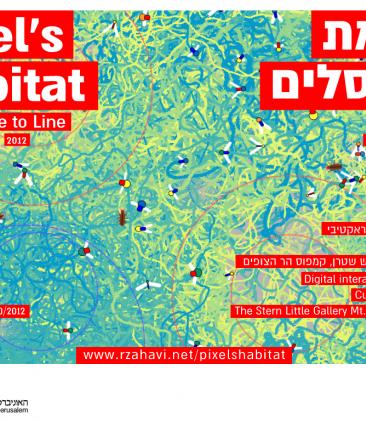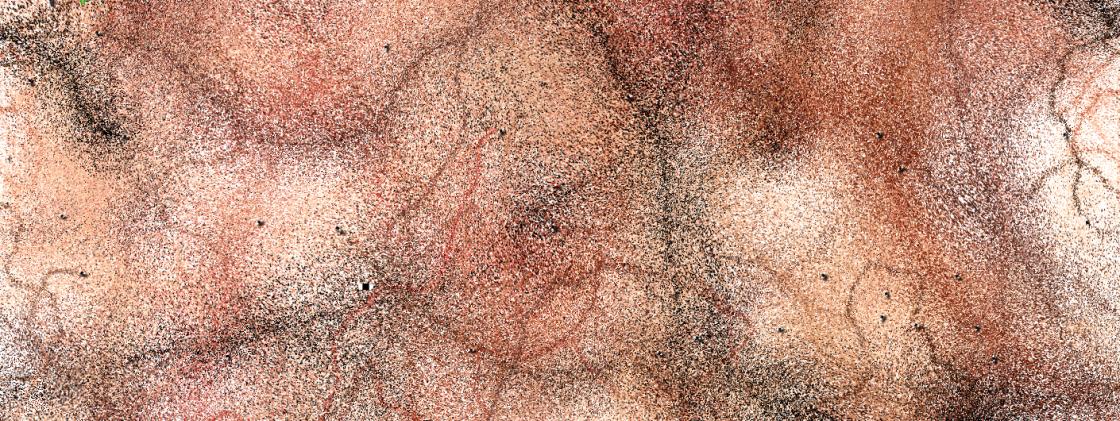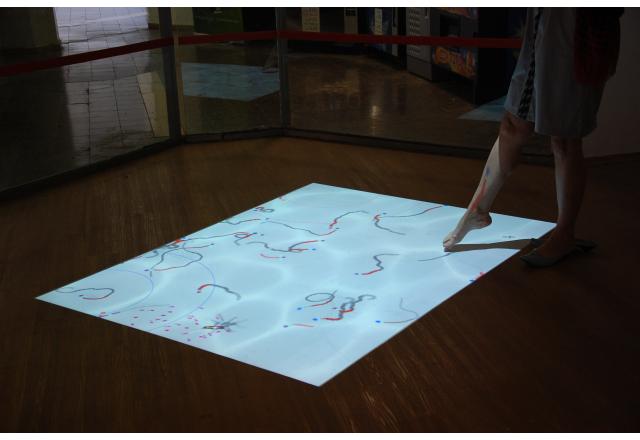An interactive presentation of two-dimensional animation that joins art to various fields of research.
Using codes in the language of the computer, hidden from the eye of the viewer, the artist creates a community of agents – digital creatures, each of which has a number of defined characteristics, a sort of genetic base. The characteristics define their behavior in space: speed of movement, relations with others, relationship to space and color; their characteristics differ from one agent to another. Their placement in space creates a visual performance of the collection, which is deciphered in the computer and creates a meeting between the agents themselves and the viewers. These meetings cause some of the original agents to disappear and others to remain and undergo mutation. Thus a new generation is created which guarantees renewal of the population and development of the process, which is also dependent on the viewing public.
Cameras installed in the area record the movements of the viewers, their voices and the surrounding noises and use the information. In this way, the viewers become, knowingly or not, active partners who influence the scene even if they chose to stand still, without moving.
The changing information, which is not dependent on the artist, creates emergence – visual renewal which is expressed in color, density, movement, groupings and emptying over the surface. These are one-time meetings that cannot be repeated, and they raise questions such as: whether complex and organized objects can suddenly appear out of general moves and simple recordings as a result of interaction of a mass of individual components. Is it possible to create new, organized group behavior and discover phenomena which were not foreseen?
In some of the works, there is a preliminary basic theory on which the composition is based: man, urban scenery and text – materials from which culture is composed. These materials are disintegrated and restructured with the appearance of a new image, as the variability creates change. The artist and the viewers do not have control or influence any longer over what takes place after the codes are written; at that stage they can no longer take responsibility.
The exhibition was displayed in the gallery and in the central library.
The exhibition has been made possible with the support of the Hebrew University, and was held as a part of Manofim Exhibition Season Opening in Jerusalem.





































